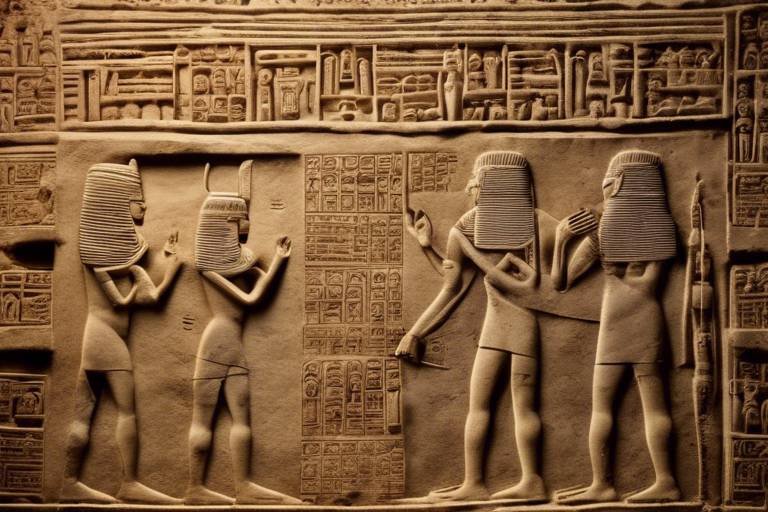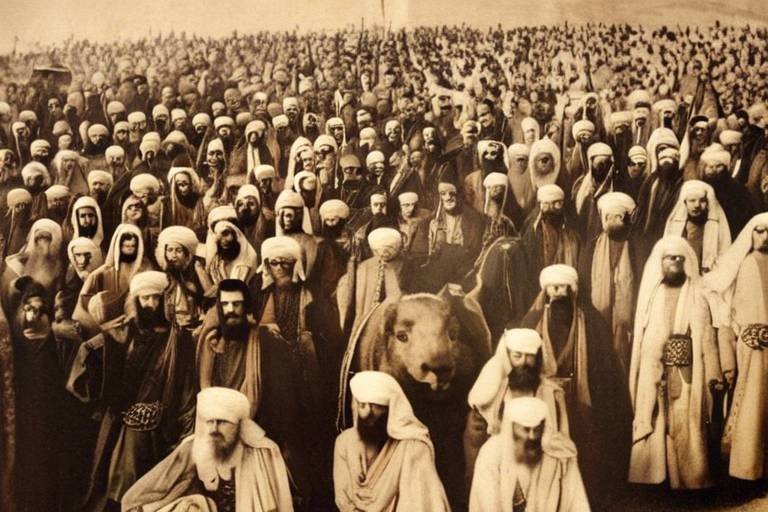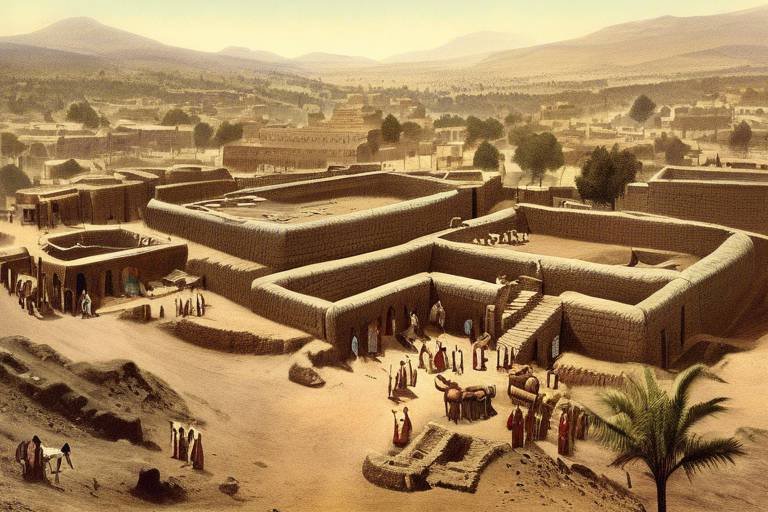The Forgotten Achievements of the Minoans
The Minoan civilization, nestled on the island of Crete, boasts a legacy of remarkable achievements that often go unnoticed in the shadow of other ancient cultures. Despite their contributions to architecture, maritime exploration, art, technology, religion, agriculture, and social structure, the Minoans remain a lesser-known civilization in popular history.
While the ancient Greeks and Egyptians often steal the spotlight, the Minoans were pioneers in advanced architecture, constructing multistory buildings that featured innovative plumbing systems and earthquake-resistant techniques. Their architectural prowess set the stage for future civilizations to emulate and advance upon.
Not only were the Minoans adept builders, but they also excelled in maritime endeavors. Their sophisticated ships and navigational skills allowed them to dominate trade in the Mediterranean, establishing extensive connections with distant lands. This maritime prowess played a crucial role in the prosperity of the Minoan civilization.
Artistic excellence was another hallmark of Minoan culture, as evidenced by their vibrant frescoes, intricate pottery, and exquisite jewelry. These artistic expressions showcased the creativity and mastery of various mediums, leaving a lasting impression on the art world.
Technological innovations were also a forte of the Minoans, from intricate metalworking techniques to the development of the unique writing system known as Linear A. Their advancements in various fields of technology placed them at the forefront of innovation in the ancient world.
Religious practices among the Minoans were deeply intertwined with nature and fertility goddesses, influencing later Greek mythology and rituals. The religious significance of their beliefs left a lasting impact on ancient beliefs and practices.
Furthermore, the Minoans demonstrated agricultural expertise through techniques such as terraced farming and irrigation systems. These practices sustained a thriving economy and supported a dense population on the island of Crete, showcasing their ingenuity in harnessing the land.
One of the most intriguing aspects of Minoan society was their social structure, characterized by an egalitarian system where women enjoyed higher status and rights compared to their counterparts in other ancient civilizations. This unique social dynamic challenges traditional notions of gender roles in antiquity.
Despite their numerous achievements, the Minoan civilization faced a mysterious decline around 1450 BCE, sparking debates among historians about the causes of their downfall. The enigmatic nature of their collapse adds an air of intrigue to the legacy of this ancient civilization.

Advanced Architecture
Exploring the remarkable accomplishments of the ancient Minoan civilization that have often been overshadowed by other ancient cultures.
The Minoans were pioneers in architecture, constructing multistory buildings with advanced plumbing systems and earthquake-resistant techniques. Their architectural prowess is evident in the intricate layout of their palaces, featuring grand staircases, light-filled courtyards, and intricate frescoes adorning the walls.
One of the most remarkable aspects of Minoan architecture is the incorporation of advanced plumbing systems, including clay pipes for water supply and drainage. This innovation allowed for efficient water management within their buildings, showcasing their engineering ingenuity.
Moreover, the Minoans developed earthquake-resistant techniques, such as the use of timber frames and flexible joints, to withstand seismic activities in the region. This attention to structural integrity highlights their forward-thinking approach to construction, setting them apart from their contemporaries.
Overall, the advanced architecture of the Minoans not only served practical purposes but also reflected their artistic sensibilities, blending functionality with aesthetic beauty in a harmonious manner.

Maritime Prowess
Exploring the remarkable accomplishments of the ancient Minoan civilization that have often been overshadowed by other ancient cultures.
The maritime prowess of the Minoans was a key aspect of their civilization, allowing them to establish dominance in trade and expand their influence across the Mediterranean. Their advanced ships, equipped with sails and oars, were instrumental in facilitating long-distance voyages and establishing trade networks with distant lands. Through their navigational skills and knowledge of seafaring, the Minoans were able to navigate the treacherous waters of the Mediterranean, reaching as far as Egypt and the Levant.
Furthermore, the Minoans' mastery of maritime trade routes enabled them to import exotic goods such as precious metals, ivory, and spices, enriching their culture and economy. Their strategic location on the island of Crete served as a hub for maritime activities, attracting merchants and traders from different regions, fostering cultural exchange and economic prosperity.
In addition to their commercial success, the Minoans' maritime activities played a crucial role in their cultural diffusion, spreading their artistic styles, architectural techniques, and technological innovations to other civilizations around the Mediterranean. The sea not only connected the Minoans to distant lands but also facilitated the exchange of ideas and knowledge, contributing to their intellectual and cultural development.
Overall, the maritime prowess of the Minoans was a testament to their ingenuity, resourcefulness, and adventurous spirit, highlighting their significant contributions to the ancient world through their seafaring achievements.
Q: What was the significance of the Minoans' maritime activities?
A: The Minoans' maritime activities were crucial for their economic prosperity, cultural exchange, and the spread of their influence across the Mediterranean region.
Q: How did the Minoans' navigational skills contribute to their success?
A: The Minoans' navigational skills allowed them to explore distant lands, establish trade networks, and engage in cultural diffusion, shaping their civilization's development.
Q: What impact did the Minoans' maritime trade have on their society?
A: The maritime trade of the Minoans stimulated their economy, facilitated the exchange of goods and ideas, and played a significant role in their cultural and technological advancements.

Artistic Excellence
The Minoans were renowned for their , which played a significant role in shaping their civilization's identity. Their artistry encompassed a wide range of mediums, from intricate pottery to stunning frescoes that adorned the walls of their palaces and homes. These vibrant frescoes depicted scenes of nature, religious ceremonies, and everyday life, showcasing the Minoans' keen observation and artistic skill.
One of the most striking aspects of Minoan art was their mastery of jewelry making. They crafted exquisite pieces using gold, silver, and precious gemstones, demonstrating their advanced techniques and aesthetic sensibilities. These intricate adornments not only served as status symbols but also reflected the Minoans' appreciation for beauty and craftsmanship.
In addition to their visual arts, the Minoans excelled in pottery production. Their pottery featured intricate designs and vivid colors, often depicting scenes from mythology or daily life. The Minoans' pottery not only served practical purposes but also served as a canvas for their artistic expression, blending functionality with artistic creativity.
Their artistic achievements were not limited to static mediums; the Minoans also excelled in sculpture. Sculptures found at Minoan sites exhibit a high level of skill and attention to detail, capturing the human form with grace and realism. These sculptures, whether depicting deities or everyday individuals, reflected the Minoans' reverence for beauty and the human form.
Overall, the artistic excellence of the Minoans not only showcased their creativity and technical prowess but also provided insights into their culture, beliefs, and values. Through their art, the Minoans left a lasting legacy that continues to captivate and inspire admirers to this day.

Technological Innovations
Exploring the remarkable accomplishments of the ancient Minoan civilization that have often been overshadowed by other ancient cultures.
The Minoans were not only advanced in their architectural feats but also made significant strides in various technological innovations that set them apart from their contemporaries. One of their remarkable contributions was in the field of metalworking. Minoan craftsmen excelled in creating intricate metal objects, such as tools, weapons, and jewelry, showcasing their mastery of metallurgy.
Moreover, the Minoans developed a unique writing system known as Linear A, which remains undeciphered to this day. This script was used for administrative purposes, indicating a sophisticated level of organization and record-keeping within Minoan society. The existence of such a complex writing system suggests a high level of intellectual development among the Minoans.
In addition to their advancements in metallurgy and writing, the Minoans also displayed ingenuity in their agricultural practices. They implemented innovative irrigation systems that allowed for efficient water distribution to their crops, contributing to the success of their agricultural endeavors. The use of terraced farming techniques further optimized land use and crop production, demonstrating their practical approach to farming.
Furthermore, the Minoans were adept in creating technologically advanced tools and implements that facilitated various aspects of their daily lives. Their craftsmanship extended beyond metalworking to include the production of intricate pottery and finely crafted artifacts. The attention to detail and precision evident in Minoan artifacts speak to their dedication to craftsmanship and innovation.
Overall, the technological innovations of the Minoans not only showcased their practical skills and creativity but also reflected their forward-thinking approach to problem-solving and societal advancement.
- What caused the decline of the Minoan civilization?
- The exact reasons for the collapse of the Minoan civilization remain a subject of debate among historians. Theories range from natural disasters, such as earthquakes and tsunamis, to invasions by foreign powers. Some scholars also suggest internal unrest or socio-political factors as potential causes.
- Did the Minoans have any influence on later civilizations?
- Yes, the Minoans had a significant impact on later civilizations, particularly ancient Greek culture. Elements of Minoan art, architecture, and religious practices can be seen in subsequent Greek developments. The Minoans' maritime prowess also influenced trade routes and seafaring traditions in the Mediterranean region.

Religious Significance
The religious beliefs of the Minoans held profound significance in shaping their culture and influencing later civilizations. Central to their spirituality were nature and fertility goddesses, symbolizing the cycle of life, death, and rebirth. These deities were worshipped in sanctuaries and caves, where rituals and ceremonies were conducted to honor and appease them.
The Minoans' reverence for nature is reflected in their art and architecture, with depictions of animals, plants, and natural elements adorning their sacred spaces. The Bull-Leaping fresco, depicting acrobats vaulting over bulls, is believed to have religious connotations, possibly tied to fertility rites or ceremonial practices.
Moreover, the Minoans' religious practices influenced the development of Greek mythology, with figures like the Earth Mother Goddess and the Snake Goddess resonating in later Greek pantheon. The myth of the Minotaur, a creature with a human body and bull's head, is thought to have originated from Minoan religious beliefs and rituals.
One of the most intriguing aspects of Minoan religion is the absence of temples or centralized religious authority. Instead, worship was decentralized, with small shrines and household altars playing a significant role in daily spiritual practices. This decentralized approach to religion allowed for individual expression and connection to the divine on a personal level.
In conclusion, the religious significance of the Minoans transcends their physical achievements, offering a glimpse into their spiritual world and the values they held dear. By exploring their religious practices, we gain a deeper understanding of the Minoan civilization and the enduring legacy they left behind.

Agricultural Expertise
The Minoans were not only adept in architecture and art but also displayed remarkable expertise in agriculture, which played a crucial role in their flourishing civilization. Their agricultural practices were innovative and sustainable, setting them apart from other ancient societies. One of the key techniques employed by the Minoans was terraced farming, where they carved steps into the hilly terrain to create flat surfaces for cultivation. This method allowed them to maximize arable land in the mountainous landscape of Crete, ensuring a steady food supply for their population.
In addition to terraced farming, the Minoans also implemented sophisticated irrigation systems to efficiently water their crops. By channeling water from nearby rivers and springs, they were able to irrigate their fields and gardens, boosting agricultural productivity. The use of advanced irrigation techniques not only increased crop yields but also enabled the cultivation of a variety of crops, including grains, fruits, and vegetables.
The agricultural expertise of the Minoans extended beyond basic farming practices. They were skilled in crop rotation, a method where different crops are planted in succession on the same plot of land to maintain soil fertility and prevent depletion of nutrients. This sustainable approach to agriculture contributed to the long-term viability of their farming system and ensured the continued prosperity of their civilization.
Furthermore, the Minoans utilized innovative storage facilities to preserve their agricultural produce. They constructed large storage jars, known as pithoi, which were buried underground to keep food items cool and protected from pests. These storage vessels were essential for storing surplus harvests and maintaining food security during times of scarcity or trade disruptions.
Overall, the agricultural expertise of the Minoans was a cornerstone of their civilization, supporting their economy, sustaining their population, and contributing to their overall prosperity. Their advanced farming techniques, coupled with their ingenuity and resourcefulness, exemplify the ingenuity and resourcefulness of this ancient culture in harnessing the power of the land for sustenance and growth.

Social Structure
The social structure of the Minoan civilization was a fascinating departure from the norms of their time. Unlike many ancient societies where women held subordinate roles, Minoan women enjoyed a higher status and more rights than in other contemporary civilizations. This unique aspect challenges traditional gender roles and highlights the progressive nature of Minoan society.
Within Minoan society, women played significant roles in religious rituals, economic activities, and even political decision-making. The prominence of goddesses in Minoan religious beliefs reflects the importance of female figures in their culture. This emphasis on feminine power and influence set the Minoans apart from their ancient counterparts.
Moreover, archaeological findings suggest that Minoan women engaged in various occupations, including pottery making, textile production, and possibly even trade. This level of economic participation indicates a more egalitarian society where both men and women contributed actively to the prosperity of the civilization.
Another notable aspect of Minoan social structure was the absence of fortified structures or defensive walls in their palace complexes. This suggests a peaceful existence where military might was not a primary focus. Instead, the Minoans prioritized trade, art, and cultural exchanges, fostering a society that valued creativity and cooperation over conquest.
Despite their advanced social structure and progressive attitudes towards gender roles, the Minoan civilization faced its own challenges and eventual decline. The mystery surrounding the collapse of their society adds an air of intrigue to their remarkable achievements, leaving historians and archaeologists intrigued by the enigmatic fate of this ancient culture.

Mysterious Decline
The mysterious decline of the Minoan civilization around 1450 BCE has puzzled historians for centuries, sparking numerous theories and debates about the possible causes behind their sudden downfall. One prevailing hypothesis suggests that a catastrophic natural disaster, such as a volcanic eruption on the nearby island of Thera (modern-day Santorini), may have triggered a chain of events leading to the collapse of Minoan society. The eruption of Thera is believed to have caused widespread destruction, tsunamis, and crop failures, severely impacting the Minoan economy and infrastructure.
Another theory proposes that internal unrest, social upheaval, or invasion by foreign powers could have contributed to the decline of the Minoans. Some scholars argue that political instability or conflicts within the ruling elite may have weakened the centralized authority of the Minoan palaces, leading to a breakdown of their once-thriving civilization. Additionally, the emergence of new regional powers in the Mediterranean may have challenged Minoan dominance and disrupted their trade networks.
Archaeological evidence also points to the possibility of a combination of factors contributing to the decline of the Minoan civilization. The widespread destruction of Minoan palaces and settlements, along with the abandonment of key urban centers, indicates a period of crisis and upheaval that ultimately led to the end of Minoan influence in the region. The exact sequence of events that led to their downfall remains a subject of ongoing research and speculation among experts in the field.
Frequently Asked Questions
- What were the main architectural achievements of the Minoans?
The Minoans were known for their advanced architecture, including multistory buildings, intricate plumbing systems, and earthquake-resistant construction techniques. Their architectural prowess set them apart from other ancient civilizations.
- How did the Minoans contribute to maritime history?
The Minoans excelled in maritime activities, with sophisticated ships and navigational skills that allowed them to dominate trade in the Mediterranean region. Their maritime prowess enabled them to establish extensive trade networks with other cultures.
- What characterized Minoan art?
Minoan art was renowned for its vibrant frescoes, intricate pottery, and exquisite jewelry. These artistic expressions showcased the creativity and skill of the Minoan people across various mediums.
- What technological innovations were developed by the Minoans?
The Minoans were at the forefront of technological advancements, with expertise in metalworking and the creation of the unique Linear A writing system. Their innovative spirit contributed to their overall cultural and technological achievements.
- What was the social structure of the Minoan civilization like?
The Minoans had an egalitarian society where women enjoyed higher status and rights compared to other ancient civilizations. This unique social structure challenged traditional gender roles and provided a more balanced environment for its inhabitants.
- What led to the mysterious decline of the Minoan civilization?
Despite their remarkable achievements, the Minoan civilization faced a mysterious collapse around 1450 BCE. Historians debate the possible causes of this downfall, ranging from natural disasters to invasion theories, adding to the enigmatic allure of the Minoan legacy.



















